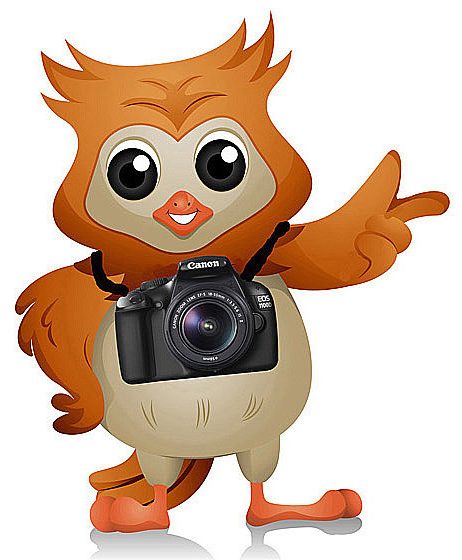
One the great things about owning a Canon DSLR camera is knowing that there are so many fantastic lenses that you can use to help you take superb pictures and videos. Canon themselves produce a wide variety, from ultra wide lenses through normal lenses and on to telephoto lenses. And if you can’t find what you want on their shelves, then you can cast an eye over any number of third party lenses, many of which are about as good as the Canon lenses and some, much better. The Canon DSLR camera owner is really spoilt for choice.
When you buy a DSLR camera, you do it so that you can take ‘proper’ photographs, and one of the great advantages of these cameras is their interchangeable lenses. These lenses will change the way you think about taking pictures forever.
But first, perhaps we should consider what lenses are for in the first place. How do they improve your photography? Have you ever tried taking a photograph without a lens? And what is photography anyway?
Photography is described as:
The art, the science and the craft of creating a durable image by recording light, either electronically or chemically.
But that doesn’t explain why we might need lenses does it?
Check out this full video from out Superb Canon Lens Course.
This video talks about the best kinds of lens for each type of photography.
 If you want to know more about the course, Click Here.
If you want to know more about the course, Click Here.
In fact you can take a picture without a lens, even with your DSLR camera, by making a pinhole camera with the camera cover. These probably aren’t the kind of pictures that you would expect to get from a DSLR camera, but they do fulfil that previous definition of photography. So what do lenses do to help you to take pictures in addition to that basic definition?

They do two very specific things:
Firstly, they enhance the amount of light coming into the camera and hitting the sensor, and that makes the image brighter.
Secondly, and far more importantly, they focus that light so that you have a sharp image on the sensor or on the film at the back of the camera.
Those two functions obviously make a huge difference to the quality of your picture taking. Even the most basic cameras – mobile phones or compact cameras – have lenses that provide brighter light, focussed onto the sensor. But, those are still limited because a basic lens on a camera or camera phone will only give you a single option and perspective.
For example, if you want to take a picture of something that is very far away, then you have to move closer to the subject. And if you want to take a picture of two things which are not terribly close together but you want them both in your frame, then you have to move further away, so that you can get them both into the frame.
So having a simple lens is not the answer to all your photographic problems. By using a more sophisticated lens you can actually change a lot more about the picture that you are taking and be a lot more imaginative. For example, you can change the perspective of the image, or you can change the depth of field so that you can decide what in the frame is going to be sharp and what is going to be out of focus. That helps you to show the viewer what it is you’re trying to say in the pictures that you’re taking. You can change the size of the subject in the frame so that it either dominates the frame or just becomes part of the story that you’re trying to tell with that particular picture. And so, instead of just creating an image by recording the light, using different lenses allows you to decide the what the picture should show – to ,in fact, interpret that picture so that when the viewer looks at it, they get your interpretation of what you saw in front of you, not just a simple recording of it.
That makes your lenses the most creative and powerful tools that you have in your camera bag. More important, in fact, than the camera body because the lenses allow you to tell the story that you want to tell – they allow you to choose the perspective and the depth of field and the angles so that you can include what you want in the frame – and discard what you don’t want, whereas the camera body just records what you have decided to photograph.
That is why lenses are so important and that is why it is so important really to understand what they do and how they do it.
OK so let’s consider some of the real potential that you have with DSLR interchangeable lenses.
Well, first of all you can change the focal length from wide, standard or telephoto.
What does that do? Firstly it allows you to have your object in your field of view – your frame – and you can either have your object large in the frame or you can have it small in the frame. That is important because it tells the viewer what is important in the frame and so what is important to your, the photographer. Or you can change the depth of field which means that you decide what is sharp when you are taking the picture.
If you are photographing a landscape you might want the whole of the frame to be sharp, so that the viewer can see the whole vista as clearly as possible.
However, if you are taking a portrait, you might just want the face to be sharp and the background to blur out so that nothing distracts the viewer from the subject.
If you are shooting macro, again you might just want one detail to be sharp and the rest to blur into insignificance.
Picture: Rolf Dietrich Brecher
But in all of these cases, you the photographer, are making the decisions and you are telling the viewer what is important in that photograph. They will take your lead and interpret your image accordingly.
Another option that interchangeable lenses can offer you is the ability to freeze the action.
If you’re at a sporting event – or you’re watching something that takes place very quickly – you can actually increase the shutter speed, have a very wide aperture, and you can capture the action in that split second – that sliver of time- when it’s actually happening.
And that allows the viewer to study that single moment which they wouldn’t have been able to see in any other way. On the other hand, you could choose to blur the action instead, and show a single frame which epitomises the energy and vibrancy of the action that is taking place.
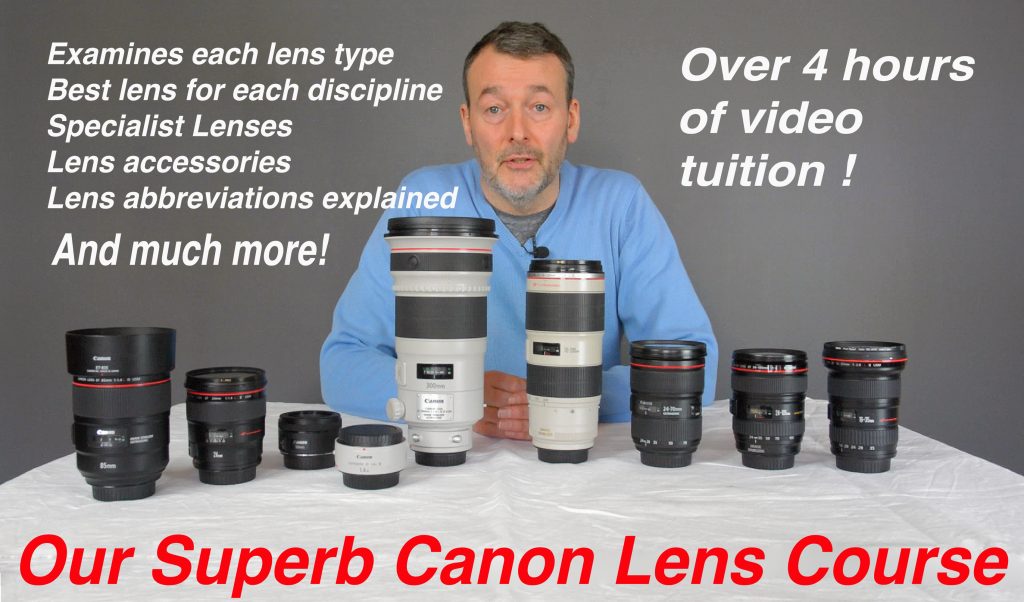
 Our Superb Canon Lens Course is designed for DSLR owners who are thinking of buying a new or used lens for their Canon camera. There are so many lenses available for Canon DSLR cameras, that it can be quite confusing, even professional photographers. This course tells you all you need to know about lenses for Canon DSLRs – both Canon lenses and third party lenses – so that you will be able to buy your next lens with confidence. Packed with information about the best lenses you can buy for each type of photography, and showing some amazing pictures from each mentioned lens, check out this Canon Lens Course now!
Our Superb Canon Lens Course is designed for DSLR owners who are thinking of buying a new or used lens for their Canon camera. There are so many lenses available for Canon DSLR cameras, that it can be quite confusing, even professional photographers. This course tells you all you need to know about lenses for Canon DSLRs – both Canon lenses and third party lenses – so that you will be able to buy your next lens with confidence. Packed with information about the best lenses you can buy for each type of photography, and showing some amazing pictures from each mentioned lens, check out this Canon Lens Course now!
The important thing to remember, as we look more closely at lenses, is that although many of them will have specific advantages and functions which we will be looking for, they will have also have disadvantages too. There is no perfect general lens. And so every lens, in one way or another, is a compromise.
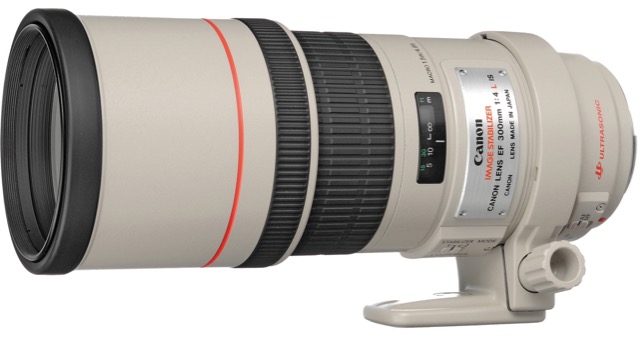
For example, this telephoto lens is pretty heavy and if we want it to be a fast lens – so that it can capture action and freeze it – it is going to be pretty expensive.
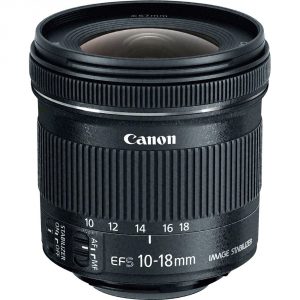
This wide angle lens, will distort the image at the edge of the frame and you may not want that in your pictures and also, these lenses can be quite expensive.
If we choose between prime lenses and zoom lenses, well primes tend to be cheaper and also they tend to be sharper, but they only give you one perspective. You can change the perspective with a zoom lens but they tend to be heavier, more expensive and less able to catch fast action. So whichever lens we look at, we have to be aware that it will only do certain things very well. That is why you need to understand lenses – so that when you decide upon the type of photography you want to pursue, you get the best lens for the job.
Now Canon camera owners will have got the 18-55mm kit lens when they bought their Canon DSLR camera, and I’m happy to say that it is actually a pretty good lens. But it is also a good example of how lenses are a compromise. Because, whilst it is a very good general lens, it does not do anything exceptionally well. However, it does give you lots of options and it does lots of things reasonably well. For example at the 18mm end it gives you the perspective of a wide-angle lens and, because it can give you a reasonably wide aperture, it allows you to shoot good street photography, travel photography and landscape photography. If we go to the other end, to 55mm – it is a good standard lens and it is just on the edge of being a good portrait lens if you have a Crop Frame camera. (Don’t worry that will be explained in the next lecture). In the middle when we are talking about 24mm or 35mm it does that pretty well for a general lens too.
So you can see that it is a very good lens to begin with and it allows you to explore and experiment with different types of photography. However, if you wanted to shoot landscapes, or travel or portraits or street photography, there are much better more specialised lenses out there.
And so now a word of warning: most people have bought a DSLR camera because it offers such a great variety of lenses, which in turn, allow you to take a great variety of pictures. Often, the first inclination for many is to go out and buy another lens, and then perhaps another one too. That can be a mistake. Nearly every photographer I know has in the bottom of their camera bag or on a shelf in their office, a lens they bought on impulse.
My advice is don’t buy a lens and then decide the pictures you want to take with it. Decide the kind of photography you want to do first, and then choose the most appropriate lens. That way you are less likely to waste money on lenses which you will hardly ever use.
There are some specialist lenses for Canon DSLR cameras that I would like to take a look at in this here. These lenses change the way pictures look and you will certainly have seen images that have been taken with these lenses.
Here, we are going to look at Macro lenses, but the chapter also discusses Fisheye lenses and Tilt and Shift lenses.
Macro photography is extreme close up photography, producing an image on the sensor which is physically almost the same size or larger than the subject. This is actually quite difficult to do with a normal lens because usually the greater the magnification of the lens – the longer the focal length – the greater the minimum focal distance – the minimum distance between the camera and the subject where the lens can still focus properly. So in other words, if you want to photograph an insect, you will be limited by the minimum focal distance of the lens, which will not let you get close enough to take a really detailed picture.
This is where Macro lenses become useful. Now true macro lenses can reproduce an image of the subject at 1:1, which means that the image projected onto the sensor is the same size as the subject. However, these days lenses that reproduce an image at half size (1:2) or even quarter size (1:4) can be called a macro lens.
And you can commonly get macro lenses from around 30mm to 200mm focal lengths, with the most common being between 60-100mm.
If you have an APS-C camera, you have an advantage as the crop factor applies and so a 1:1 macro lens would become a 1:1.6 lens.
Longer macro lenses are useful if you want to take a macro picture, yet still need to keep some distance from the subject so that you don’t disturb it.
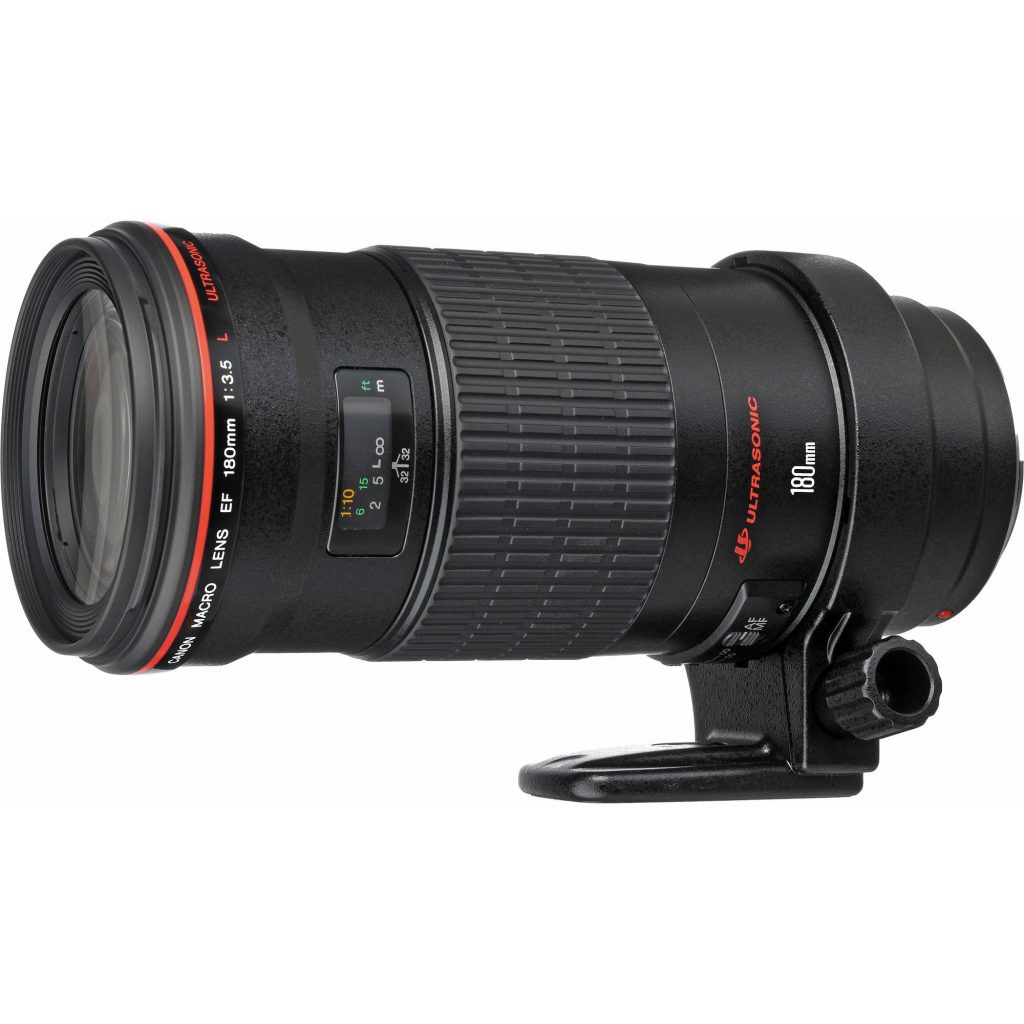
For example a Canon EF 180mm f/3.5L Macro USM, which is Canon’s longest Macro lens has a Minimum focal distance of 48cm.
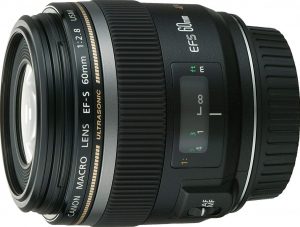
Whereas the Canon EF-S 60mm f/2.8 Macro USM has an minimum focal distance of just 9.6cm.Wider macros are good if you want to shoot something in the middle of the frame and still have some blurred background.
Remember the minimum focal distance is measured from the sensor inside the camera, not the front of the lens, so a short Minimum focal distance, could bring the front of the lens very close to the subject indeed – perhaps only a few cm.
This could cause a live subject to move away, and could also cast a shadow of the lens over an inanimate subject.
Whilst autofocus is very important for these lenses, you are going to be pushing the lens towards its limits, because at around minimum focal distance, the lens may struggle to focus. So if you are going to shoot Macro regularly, you are going to have to be comfortable focusing manually.
This is where the liveview screen comes into its own. Not only is the liveview focusing system more accurate – though it is a little slower- but also the large screen allows you to check sharpness by enlarging the focused area to check the image before hand. Also you need to remember that, because you are so close up to the subject, depth of field can be extremely shallow – perhaps only a few mm – so you need to be sure that you are focusing on the right area of the image.
Because you are often so close to the subject, with such shallow depth of field, it is better to use a tripod whenever you can. However, most macro lenses will come with very good image stabilisation systems to counter movement if you are shooting hand held. More than in any other type of photography, any vibration or movement in the camera can massively degrade the sharpness of the image. And so a remote shutter release cable would also be useful.
If you want to try macro photography without having to buy or rent a lens, it is worth noting that there are a couple of very cheap ways of trying it out, that are explained in the lens accessories lecture. However, if you have decided to take the plunge and get yourself a good macro lens, I think you should take a look at these:
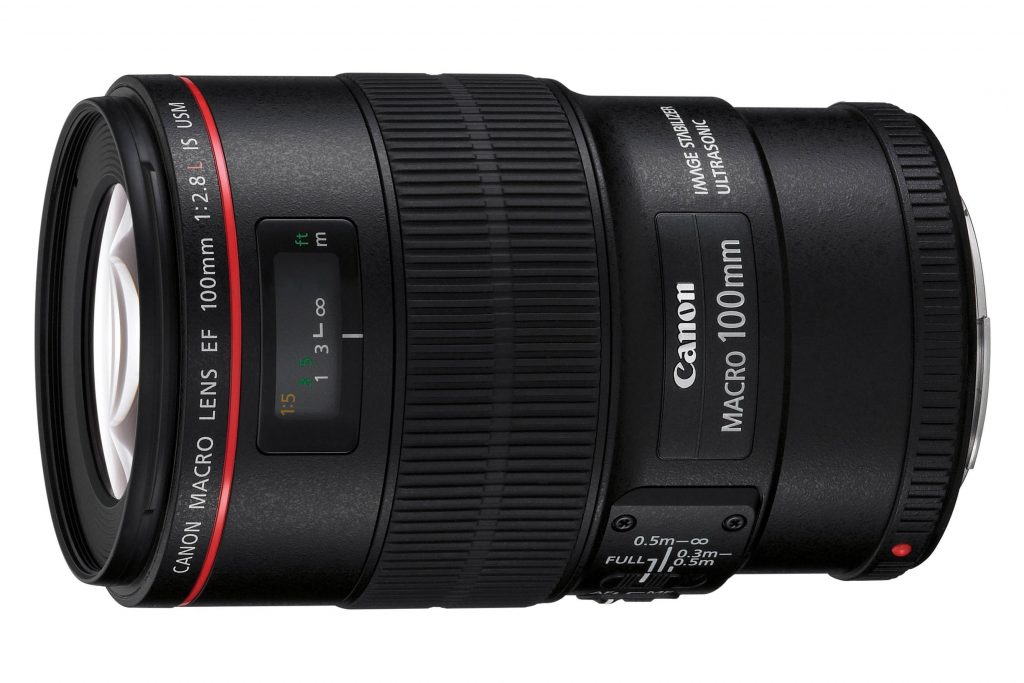
The Canon EF 100mm f2.8 L macro IS USM lens is a proper 1to 1 macro lens with a minimum focal length of 30cm, but can also produce remarkable portraiture with shallow depth of field and a good bokeh effect.
It has an excellent hybrid image stabilization system, which counteracts both angular and lateral shake. Added to that the autofocus is as close to silent as you can get, so your subject won’t be frightened away by noise.
If you are looking for a cheaper third party lens, take a look at the Tamron SP 90mm f/2.8 Di Macro 1:1 VC USD lens. This also has a minimum focal length of 30cm and enhanced image stabilisation – which Tamron call Vibration Compensation. Whilst it is quite heavy and bulky, the autofocus is pretty quiet and the image quality is excellent.
Picture: Lluis Satorre Gonzalez
Finally, if you want a wider angle lens, the Canon EF-S 35mm f/2.8 Macro IS STM. This 1:1 lens, again with hybrid image stabilisation, solves the problem of getting so close to a subject that you affect the light, by having a controllable light built in to the front of the lens. This allows you to make full use of the Minimum focal distance of 3cm and take some spectacular macro images. A picture using the light in the front of the EF-S 35mm macro lens. There are two lights, so you can choose to illuminate just one side of the subject.
All for just £14.99. Click here for details
